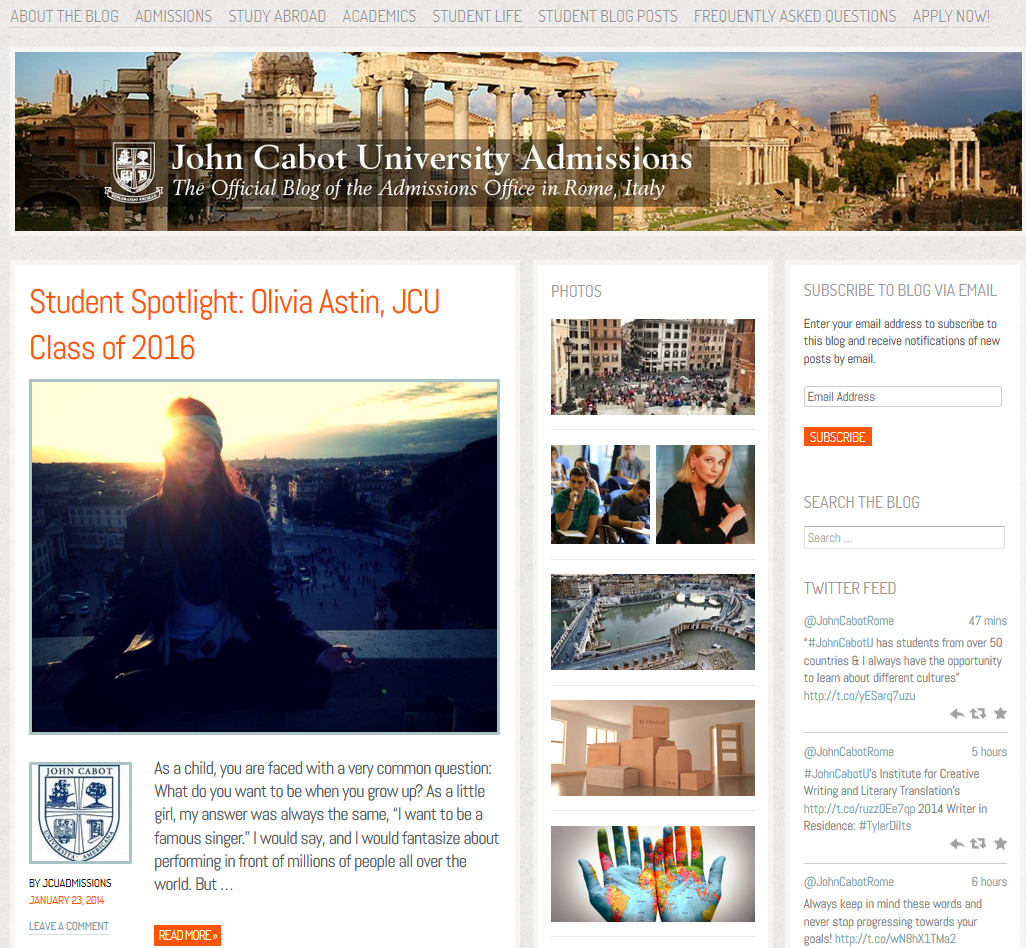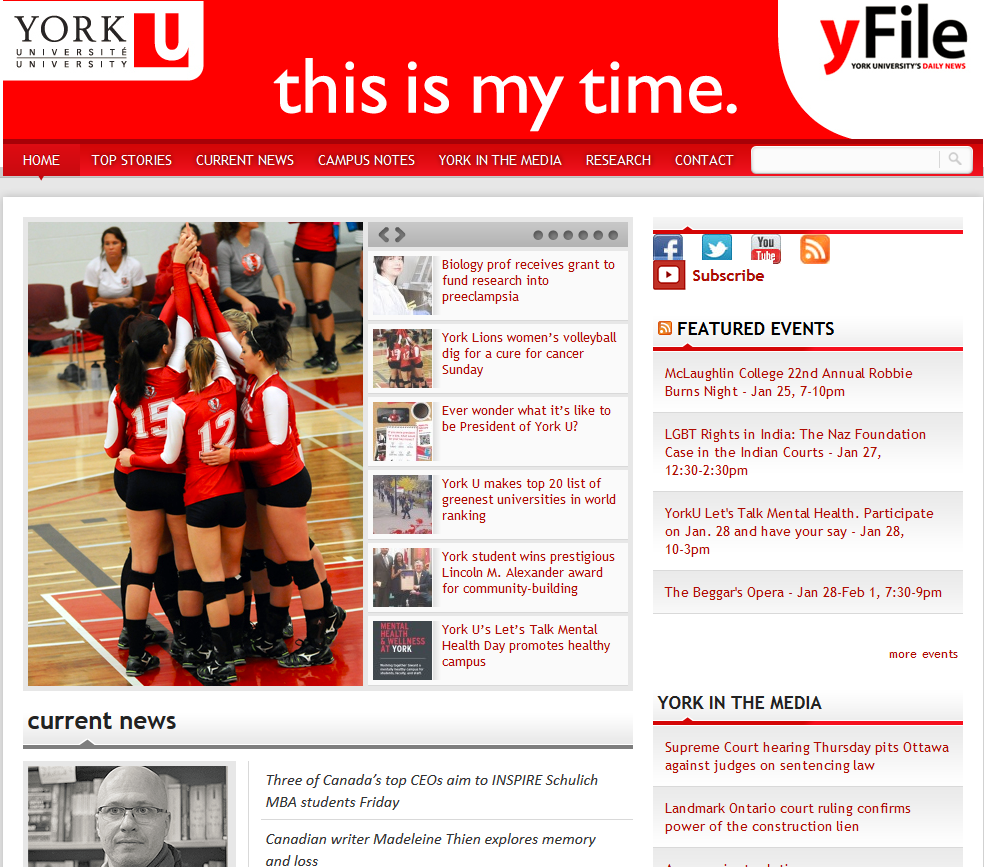The complexity of the highly dynamic higher education environment makes it a constant challenge to maintain the quality, consistency, and timeliness of its university website. But there are several reasons colleges and universities should prioritize this, not the least of which is that students and prospects use your website as their primary source of information about you. They are always hungry for the most relevant data. Outdated or unclear information or stock photos that don’t match the related text give schools an undesirable image in the eyes of prospects. New content keeps visitors returning to your website, establishing your school as a trusted source of accurate information and encouraging sharing via social media.
Freshness is a significant factor in how search engines prioritize websites for certain search queries. The rate and amount of document change and new page creation, particularly for content judged important (main body text, above the fold), is all considered by Google’s algorithms. The rate of new link growth also signals freshness in this regard, particularly inbound links from sites with a higher quotient of recent content. Quality backlinks are the most important ranking factor in SEO for schools, and keeping your content up-to-date is the surest way of gaining this visibility.
Keeping Current
Your website should reflect your college or university, featuring a solid brand foundation and supporting content that is in perpetual metamorphosis, mirroring the youthful spirit of your students. The most apparent strategy for ensuring a steady supply of fresh content to your website is through an effective content management system (CMS), such as WordPress, which accessibly allows for real-time updates to content across a site, integrated with consistent design properties. Managing web content should be a simple and streamlined process, leveraging simple tools to create, modify, publish, distribute, and archive content.
To meet the demand for frequent, fresh, high-quality material, blogging is more important than ever. According to HubSpot, companies that blog have 97% more inbound links. It is the anchor of content marketing for its SEO benefits and because it can be shared across social networks to generate more inbound links and potentially repackage for even newer content further down the road. To be valuable for your students, blog posts need to speak their language, providing relevant, informative, and interesting content that they will happily digest and share. One good way for blogs to speak the student language is by having students write the blogs themselves! Prospects trust the opinions of current students more than indistinguishable ad-speak, and establishing a vibrant online community with student blogs gives them a voice while the website benefits from the traffic and fresh content relevance for higher education.
Example: John Cabot University offers its students an opportunity to participate in content development by sharing their experiences on campus as part of its action-packed official admissions blog website.
What’s Newer than News?
News and events sections have become somewhat controversial in university website design. Many recently redesigned sites, such as Arizona State University, have done away with prominent “news and events” sections on their homepages, as these don’t tend to be revenue-generating services, and their inbound marketing benefits can be sufficiently served through a link on the menu bar. However, news sections provide a steady stream of fresh content and visitors seeking information relevant to the school and, thus, to them. They can include everything happening on your campus, upcoming events, and prestigious awards or interesting grants received by students, alumni, or faculty. It can be an opportunity to acknowledge instances of academic recognition or for more practical concerns, such as informing your students that certain roads or campus buildings are closed.
When developing this section, create an efficient process for maintaining and updating content that is broad-based in appeal and of general importance to the community. Departments or individuals with events or promotions for consideration should submit requests in advance to a contact person on the communications team while maintaining calendars of their events on their respective pages to expedite planning. News stories can be syndicated across several relevant pages of the website or linked to microsites.
Example: York University has a very well-developed news section, including portions for campus news, featured events, and updates related to their research. They highlight new books published by their professors and inform their students about weather conditions, while “York in the Media” takes a look at the university’s involvement in greater society. Social media feeds link to the activity on Facebook, YouTube, and Twitter.
Create an E-Newsletter
Electronic newsletters feature accumulated recent content or target a specific group (i.e., international students) to push your content to the audience that is most likely to consume it. Be sure to include newsletter sign-up calls to action in your emails and various channels, with a simple method of unsubscribing.
Example: The University of Alberta’s eWeekly newsletter for international students features numerous resources of interest to a demographic that is sure to have many questions. It offers quick links to the International Student Network, peer support program and handbooks, upcoming events, and an invitation to submit content for the good of the community.
Stimulating Content Strategies
Creating an effective balance of information sources provides more relevant content for your diverse audiences. Here are 9 tips to get started:
- Leverage your existing materials to develop fresh content that draws visitors deeper into your website, using a variety of content mediums, including infographics, success stories, and videos; your marketing department may be a rich source of multimedia resources
- Templates and automation can streamline your creation process, inserting content into readymade formats or automatically importing data from databases, external sites, or other content sources, repurposing existing content without requiring oversight
- Integrate RSS feeds to automatically push content to the farthest reaches of your social networking sites, which can be subscribed to by students and others
- Create a content calendar by accumulating topics for the following few months that are of interest to your audiences, keeping on top of social media trends, and understanding your most popular content with Analytics tools; consistent publishing is vital to growing your audience
- Develop clear roles and processes to make content publication as efficient as possible, with an established content editor so that all creators understand where and when their content should go
- Open up content contribution to more users across the organization by curating from external sources before extending your reach across diverse social channels; clarify content guidelines and submit to the editorial team as simple as possible
- Invite engagement by incorporating calls to action and responding quickly to continue the conversation
- Managing your links is an essential but often overlooked element of content optimization, particularly for quickly changing websites; bad links are a sure way to frustrate your audience needlessly and can severely impact your search engine rankings
- Listen to your community through direct feedback, online conversations, and data-driven analytics evidence to continuously improve your communications; knowing your audience will make your content easier to develop
Busy admissions teams and university marketers no doubt have enough on their plates without the emerging requirements for frequent, high-quality content. We have many content strategy and development resources available in our past blogs to help make content solutions more transparent. If your college doesn’t have the staff to keep up, sometimes less content can be effective as long as it is consistently published and of good quality.
How does your school keep your content up to date?
FAQs
Why is fresh content important on a website?
Freshness is a significant factor in how search engines prioritize websites for certain search queries. The rate and amount of document change and new page creation, particularly for content judged important (main body text, above the fold), is all considered by Google’s algorithms.








